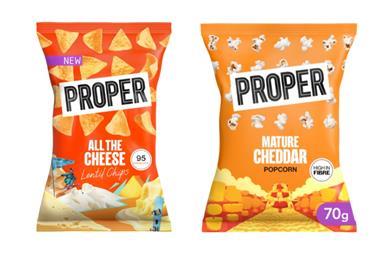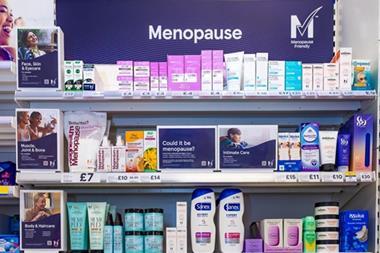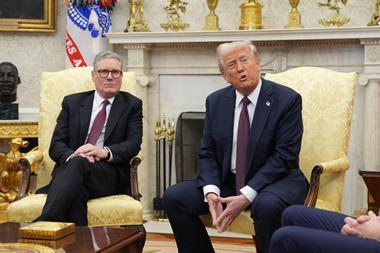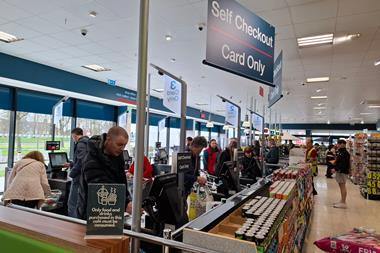How can former US grocery chief Bram Duchovnay make Amazon's British operation win when its UK retail offer is so idiosyncratic, asks Guy Montague-Jones
The many curious items on Amazon's grocery bestseller list is likely to reassure rivals. Obscure products such as Libby's 100% pure pumpkin tins and tubs of Vanilla Marshmallow Fluff - described as "the best marshmallow cream anywhere" - feature in a top 20 that suggests Amazon is some way from the grocery big time.
However, it may be premature to dismiss Amazon's foray into UK grocery. This is, after all, a retailer that took seven years to make a profit and today towers over online retail, generating a net profit of more than $900m in 2010. And its share price performance since the start of the recession puts conventional retailers to shame.
The appointment, this autumn, of erstwhile head of US grocery Bram Duchovnay to UK grocery certainly suggests Amazon is committed to the business. So, having given up Seattle for Slough, what chance does he have of making it a success and muscling share from more established online grocers?
Amazon launched into grocery in July last year with a proposition unlike any other in the UK. It has no fleet of delivery vans and the bulk of the groceries it sells are shipped from third parties. So if customers were to attempt a traditional weekly shop they would end up with a hefty delivery bill and products turning up in batches.
To make its offer appealing, Amazon has focused on two opportunities: bulk-buy everyday items to reduce delivery charges, and niche brands that shoppers may struggle to find elsewhere.
The retailer has certainly been busy growing its product range. At launch it had 22,000 products and now there are more than 82,000 groceries to choose from on the website - more than four times the number offered at Ocado, which boasts the biggest range of all the established online food retailers.
The enormous choice gives shoppers the chance to buy oddities like Zombie-branded beef jerky, freeze-dried ice cream and chilli beer.However, there are some gaping holes on the Amazon website. For example, Kellogg's Frosties is nowhere to be found among the 394 products listed under cereals and muesli. The Evian brand is missing among the 124 water lines on sale.
It is not just brands that are absent. There is limited choice of pack size and format as well - Pepsi cola cans, for example, are only available in packs of 24. "You cannot have confidence that they will have the brands, sizes or formats you want - it's really hit and miss. To be taken seriously that needs to change," says Kantar Retail analyst Bryan Roberts.
Disappointing sales
So far suppliers have expressed disappointment with sales from the Amazon grocery site. "It hardly registers on our radar at the moment in terms of sales volume," says one leading fmcg supplier. "And there's been no real improvement since launch."
The supplier suggests a lack of marketing since the press launch last year may be partially to blame. "There's a big problem of awareness. Would people think to go to Amazon to stock up on dishwasher tablets, for example?"
However, the supplier admits that with its route to market via a wholesaler its sales were lower than they could be. Experience shows that products sold via Amazon directly stand a much better chance of ending up in shopping baskets because consumers can elect to have them delivered together, making the proposition more convenient and reducing potential delivery charges.
Currently, only 15% of the groceries sold on Amazon are distributed directly, but the online retailer has been negotiating with suppliers to stock more big brands itself over the past year, recently adding Procter & Gamble lines to the list, with others understood to be in the pipeline. Another area it's hoping to exploit is Subscribe and Save.
Just under 2,000 of the 12,000 groceries shipped by Amazon are sold under this model, which gives consumers the opportunity to sign up for regular deliveries of bulky products in exchange for discounts of at least 10%.
"This has been hugely successful in the US and could be a very interesting opportunity for them over here," says Roberts. However, suppliers doubt it can repeat its success in the US, where, for Procter & Gamble, Subscribe & Save turned Amazon into a top-three customer almost overnight.
"People simply don't have the space to store bulky products as they do in the States," says one. "They appear to have just dumped the US model on the UK market, which is completely different."
One area of undoubted superiority over its UK grocery rivals is its SEO capabilities, and this can help the retailer win sales in non-core categories so its long tail of obscure products can wag, says a leading SEO expert.
"The supermarkets are so fixated on their own agendas. They don't seem to realise that companies such as Amazon are stealing their market share in areas like recipe books and dried goods," warns Juliette van Rooyen, consultant at Reform, an agency that carried out research for The Grocer on the SEO performance of the leading online food retailers.
And with a new head of grocery, Amazon is likely to push through further improvements. "The appointment signals some intent to grow the business and take it seriously," says Roberts.
A threat in bulk and niche
A radical overhaul of Amazon's grocery business to turn it into a genuine direct rival appears unlikely. It has established a distinct offer in the UK and has little to gain from taking on the big grocery guns head-to-head.
But by filling brand and range gaps and expanding the number of products sold directly from Amazon, Roberts believes the online retailer could become more of a threat, particularly through bulk buying. "Amazon is unlikely to have Tesco quaking in its boots, but it could be impactful in some categories," he says. And by doing what it already does better, Amazon could chip away at their market share.
"Amazon is very analytical, very spreadsheet-driven - they lack trading vision," says one industry insider. "But with their track record, I wouldn't bet against them."
The Amazon story
1995 Amazon.com is founded as an online bookstore by computer scientist Jeff Bezos
January 2002 Amazon makes its first-ever quarterly net profit: $5m
2006 Amazon launches into online grocery in the US
August 2007 A fresh grocery delivery service, AmazonFresh, is launched in the company's hometown of Seattle
July 2010 Amazon launches an online grocery store in the UK featuring 22,000 products
October 2011 Amazon's UK grocery offer expands to more than 80,000 products
The many curious items on Amazon's grocery bestseller list is likely to reassure rivals. Obscure products such as Libby's 100% pure pumpkin tins and tubs of Vanilla Marshmallow Fluff - described as "the best marshmallow cream anywhere" - feature in a top 20 that suggests Amazon is some way from the grocery big time.
However, it may be premature to dismiss Amazon's foray into UK grocery. This is, after all, a retailer that took seven years to make a profit and today towers over online retail, generating a net profit of more than $900m in 2010. And its share price performance since the start of the recession puts conventional retailers to shame.
The appointment, this autumn, of erstwhile head of US grocery Bram Duchovnay to UK grocery certainly suggests Amazon is committed to the business. So, having given up Seattle for Slough, what chance does he have of making it a success and muscling share from more established online grocers?
Amazon launched into grocery in July last year with a proposition unlike any other in the UK. It has no fleet of delivery vans and the bulk of the groceries it sells are shipped from third parties. So if customers were to attempt a traditional weekly shop they would end up with a hefty delivery bill and products turning up in batches.
To make its offer appealing, Amazon has focused on two opportunities: bulk-buy everyday items to reduce delivery charges, and niche brands that shoppers may struggle to find elsewhere.
The retailer has certainly been busy growing its product range. At launch it had 22,000 products and now there are more than 82,000 groceries to choose from on the website - more than four times the number offered at Ocado, which boasts the biggest range of all the established online food retailers.
The enormous choice gives shoppers the chance to buy oddities like Zombie-branded beef jerky, freeze-dried ice cream and chilli beer.However, there are some gaping holes on the Amazon website. For example, Kellogg's Frosties is nowhere to be found among the 394 products listed under cereals and muesli. The Evian brand is missing among the 124 water lines on sale.
It is not just brands that are absent. There is limited choice of pack size and format as well - Pepsi cola cans, for example, are only available in packs of 24. "You cannot have confidence that they will have the brands, sizes or formats you want - it's really hit and miss. To be taken seriously that needs to change," says Kantar Retail analyst Bryan Roberts.
Disappointing sales
So far suppliers have expressed disappointment with sales from the Amazon grocery site. "It hardly registers on our radar at the moment in terms of sales volume," says one leading fmcg supplier. "And there's been no real improvement since launch."
The supplier suggests a lack of marketing since the press launch last year may be partially to blame. "There's a big problem of awareness. Would people think to go to Amazon to stock up on dishwasher tablets, for example?"
However, the supplier admits that with its route to market via a wholesaler its sales were lower than they could be. Experience shows that products sold via Amazon directly stand a much better chance of ending up in shopping baskets because consumers can elect to have them delivered together, making the proposition more convenient and reducing potential delivery charges.
Currently, only 15% of the groceries sold on Amazon are distributed directly, but the online retailer has been negotiating with suppliers to stock more big brands itself over the past year, recently adding Procter & Gamble lines to the list, with others understood to be in the pipeline. Another area it's hoping to exploit is Subscribe and Save.
Just under 2,000 of the 12,000 groceries shipped by Amazon are sold under this model, which gives consumers the opportunity to sign up for regular deliveries of bulky products in exchange for discounts of at least 10%.
"This has been hugely successful in the US and could be a very interesting opportunity for them over here," says Roberts. However, suppliers doubt it can repeat its success in the US, where, for Procter & Gamble, Subscribe & Save turned Amazon into a top-three customer almost overnight.
"People simply don't have the space to store bulky products as they do in the States," says one. "They appear to have just dumped the US model on the UK market, which is completely different."
One area of undoubted superiority over its UK grocery rivals is its SEO capabilities, and this can help the retailer win sales in non-core categories so its long tail of obscure products can wag, says a leading SEO expert.
"The supermarkets are so fixated on their own agendas. They don't seem to realise that companies such as Amazon are stealing their market share in areas like recipe books and dried goods," warns Juliette van Rooyen, consultant at Reform, an agency that carried out research for The Grocer on the SEO performance of the leading online food retailers.
And with a new head of grocery, Amazon is likely to push through further improvements. "The appointment signals some intent to grow the business and take it seriously," says Roberts.
A threat in bulk and niche
A radical overhaul of Amazon's grocery business to turn it into a genuine direct rival appears unlikely. It has established a distinct offer in the UK and has little to gain from taking on the big grocery guns head-to-head.
But by filling brand and range gaps and expanding the number of products sold directly from Amazon, Roberts believes the online retailer could become more of a threat, particularly through bulk buying. "Amazon is unlikely to have Tesco quaking in its boots, but it could be impactful in some categories," he says. And by doing what it already does better, Amazon could chip away at their market share.
"Amazon is very analytical, very spreadsheet-driven - they lack trading vision," says one industry insider. "But with their track record, I wouldn't bet against them."
The Amazon story
1995 Amazon.com is founded as an online bookstore by computer scientist Jeff Bezos
January 2002 Amazon makes its first-ever quarterly net profit: $5m
2006 Amazon launches into online grocery in the US
August 2007 A fresh grocery delivery service, AmazonFresh, is launched in the company's hometown of Seattle
July 2010 Amazon launches an online grocery store in the UK featuring 22,000 products
October 2011 Amazon's UK grocery offer expands to more than 80,000 products













No comments yet